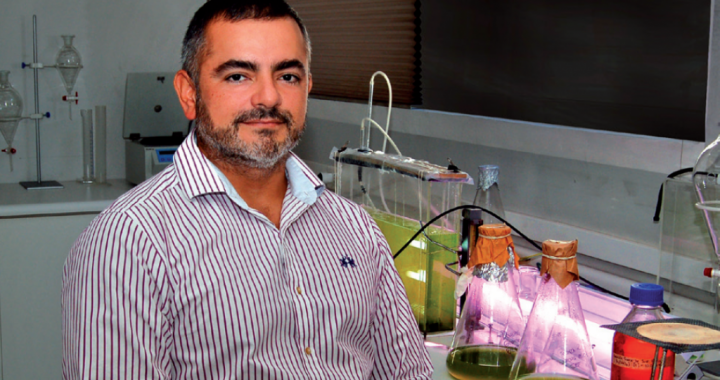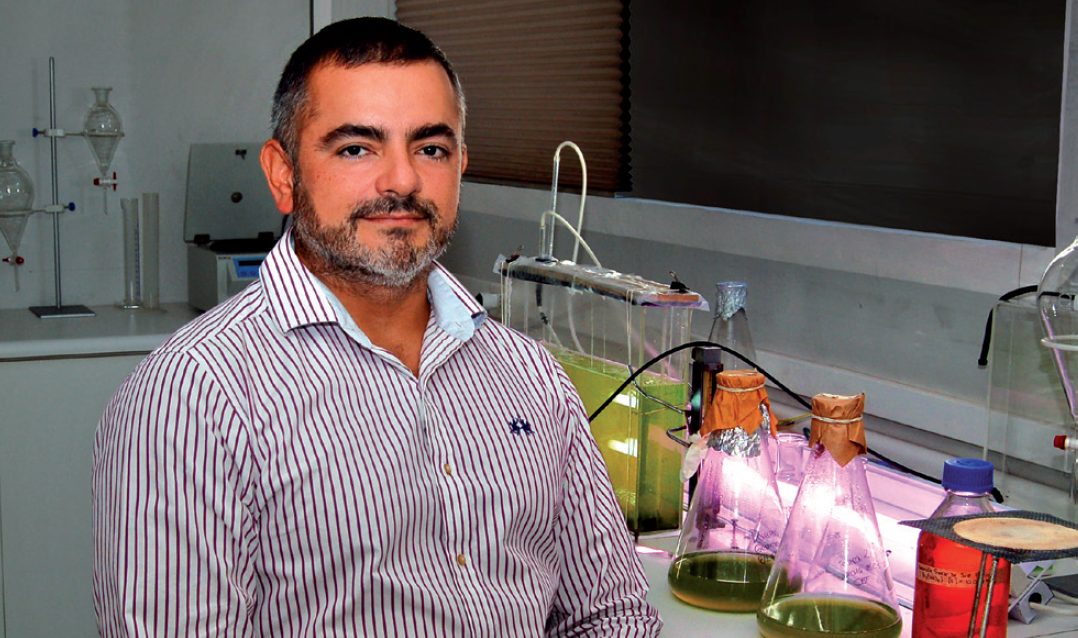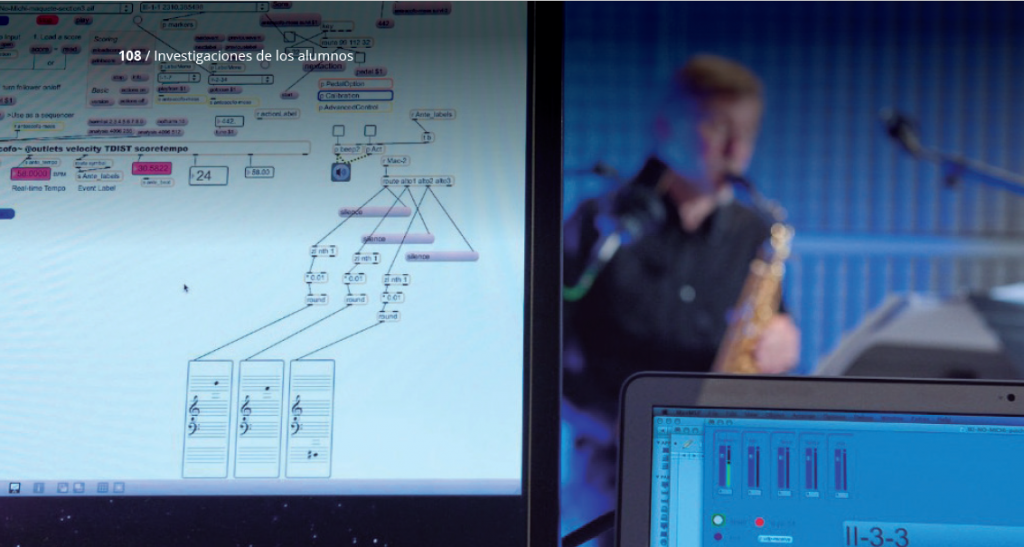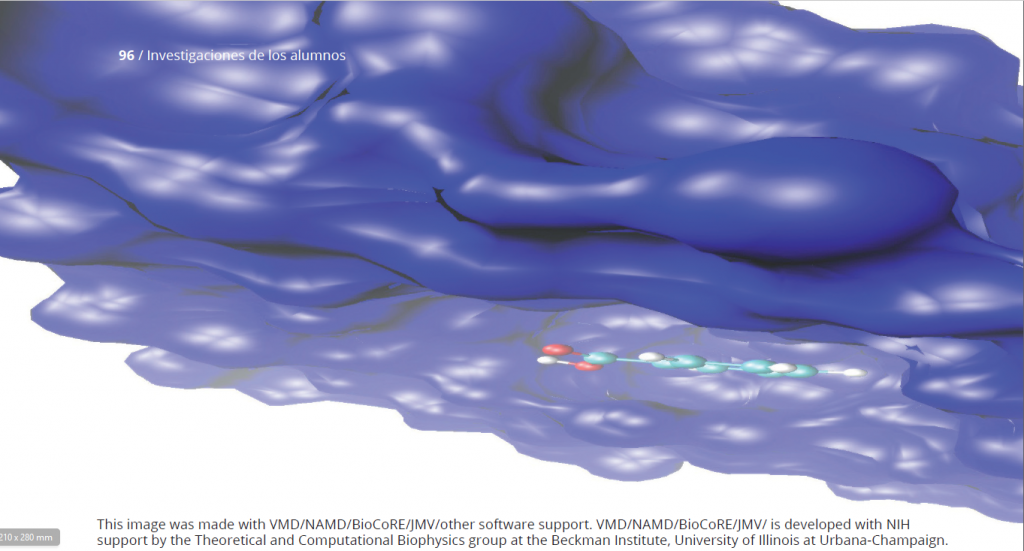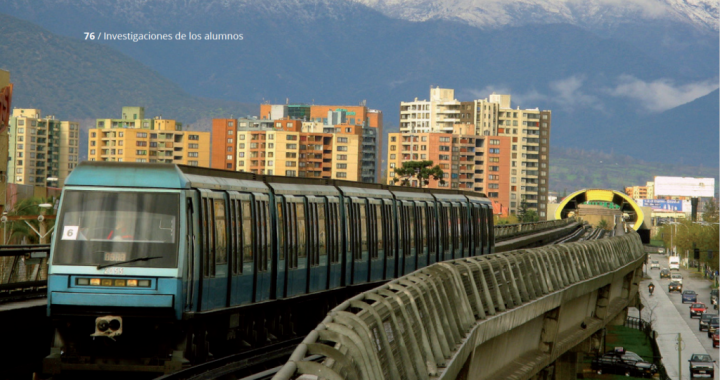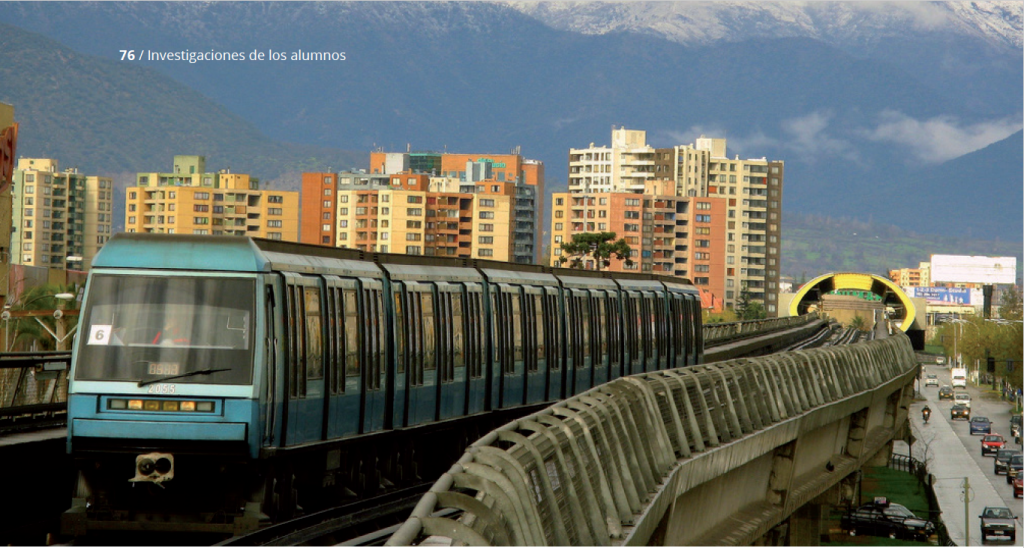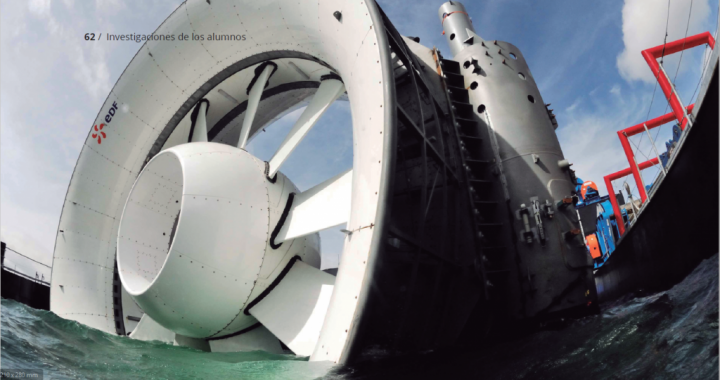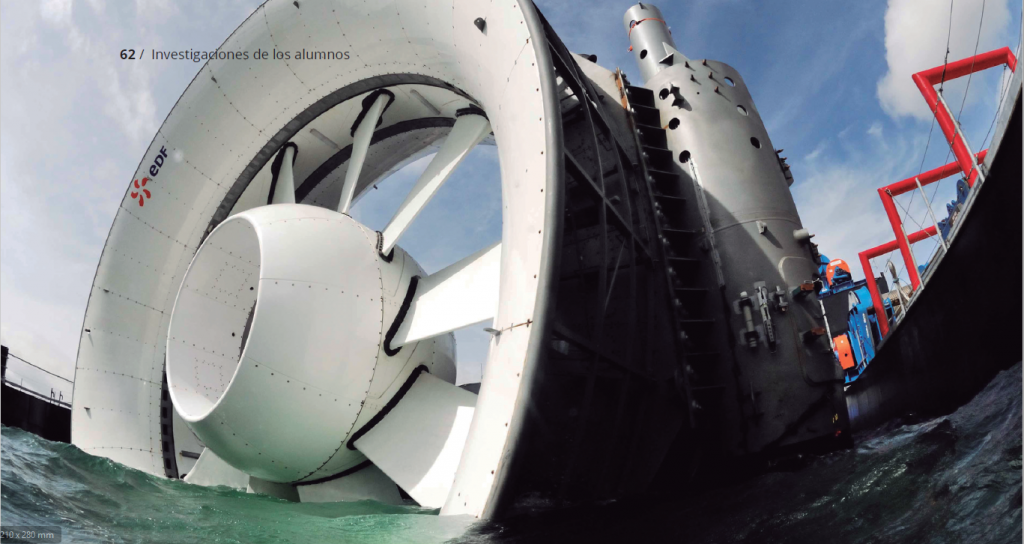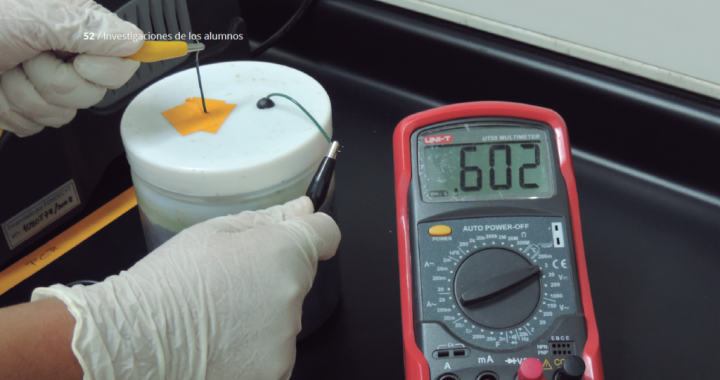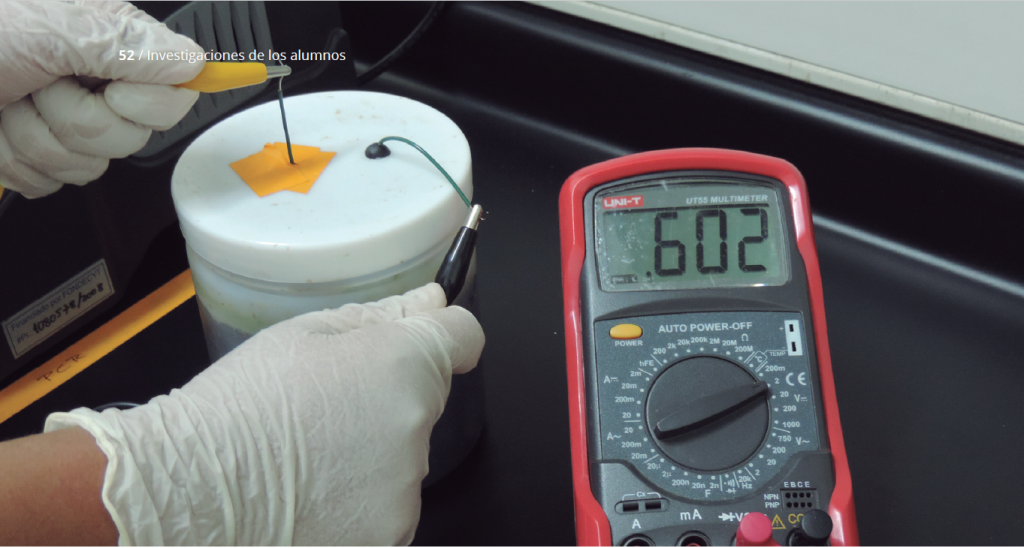Ya completo este nuevo número del Journal I3: Investigación, Interdisciplina e Innovación, no dejo de sorprenderme con el tremendo entusiasmo de alumnos y profesores que intentan transmitir la relevancia de la investigación en pregrado. Son justamente ellos, nuestros ahora alumnos, los que nos sucederán en algún momento, más tarde o más temprano, para seguir avanzando en este proceso infinito de crecimiento del ser…
Leer más…
Archivo por Categoría: Número 6
Editorial: con la mirada en el 2030
Determination of hydraulic parameters of green roofs through drainage experiments and inverse modeling with Hydrus 1D
Nicole Blin, Victoria Sandoval, Francisco Suárez, Felipe Victorreo, Carlos Bonilla, Jorge Gironás, Sergio E. Vera, Waldo Bustamante, Vicky Rojas, Pablo Pastén.
JI3 2016, number 6, pages 121-131.
Abstract
Green roofs are technological solutions that integrate vegetation into infrastructures to reach benefits such as the reduction of rooftop runoff peak flows. The proper performance of a green roof depends on its substrate, which is an artificial media that has an improved performance compared to natural soils. Therefore, it is very important to investigate the substrate properties to characterize the behavior of a green roof, and to optimize its performance. This work investigates the hydraulic properties of three substrates commonly found in green roofs, corresponding to Las Brujas, Verde Activo and Jardinsen, by means of drainage experiments and numerical simulations. The drainage experiments consist in substrate columns that are saturated with water and then drained by fixing different pressure heads at the bottom of the column. These experimental data enables the determination of the water retention and hydraulic conductivity curves of each substrate by inverse modeling using the Hydrus 1D software. It was concluded that, among the three substrates used in this investigation, the Jardinsen substrate retained a larger amount of water. Therefore, we recommend the use of this substrate to reduce surface runoff of storms with small return period.
First steps toward embedding real-time audio computing in Antescofo
Nicolás Schmidt, Arshia Cont, Jean-Louis Giavitto.
JI3 2016, number 6, pages 108-120.
Abstract
The problem of preservation through time of interactive music pieces has always been present in this field of contemporary music. Because of the size, versatility and computational power of the UDOO minicomputer, INRIA’s MUTANT team has decided to compile a version of the Antescofo software in order to conserve these musical pieces. However, because of the digital signal processing architecture of the software, a nonoptimal performance for the interpretation of real time pieces was observed. In this article, we present a new version of Antescofo that changes the signal processing paradigm from an architecture of a message passing system between Antescofo and external patches, to an architecture that integrates the Faust digital signal processing library. This research is based on the perform of profiling tests for both versions, with the aim of seeing if the new architecture is actually better in terms of performance for real time applications than the older version. The methodology used was to compare both versions performing the interactive music piece “Anthèmes 2” from Pierre Boulez and the comparison of the execution times of the digital signal processing process. The new architecture showed an improvement of 46%. The results exposed suggest that the technical resources of the UDOO platform are enough to run a version of Antescofo, allowing this way to preserve interactive musical pieces through time.
Molecular dynamics simulation for a mixture of benzoic acid in water: Relation between interatomic positions and solubility
Raimundo Gillet, Angélica Fierro, José Ricardo Pérez-Correa, Loreto M. Valenzuela.
JI3 2016, number 6, pages 96-107.
Abstract
Polyphenols are a family of chemical compounds widely distributed in plants. Their antioxidant, antiviral, antimicrobial and anti-inflammatory properties have attracted the interest of the food, cosmetic and pharmaceutical industries. Therefore, their optimal extraction from plant material is an active research topic in process engineering. Polyphenol compounds contain aromatic rings and alcohol groups in their structure, leading to a hydrophilic behavior in most cases. Hence, pressurized hot water is a viable, safe and environmentally friendly solvent for their extraction. It is possible to study the affinity of polyphenols for water as a first approach to understand their aqueous solubility at different temperatures and pressures. Equilibrium affinity between compounds is represented by their intermolecular attraction or repulsion; therefore molecular dynamics simulations could be useful to better explain the solubility of polyphenols in water. One of the simplest polyphenol molecules is benzoic acid, which implies that its molecular dynamics simulations should be simple to perform. Also, there is a large amount of experimental data on the literature to compare its solubility with the simulation results. The purpose of this study was to explore the applicability of molecular dynamics simulations in predicting the solubility of benzoic acid in water at different temperatures by analyzing interatomic distances and some of its equilibrium properties. Molecular dynamics simulations were carried out at isothermal-isobaric conditions using the NAMD v2.9 software, and the interaction between water and benzoic acid was analyzed at different temperatures. The effects of intermolecular interactions were studied by means of an analysis of energies, hydrogen bonding and radial distribution functions (RDF), once the equilibrium was reached, and the results were compared with experimental solubility data. It was observed that the average amount of hydrogen bonds increases with increasing solubility until it reaches a maximum value.
Socio-spatial segregation and urban mobility in Santiago
Omar Seguel, Patricia Galilea.
JI3 2016, number 6, pages 76-95.
Abstract
The intensive growth of Santiago, the continuous increase in motorization rates and the increase on social inequality in the country have resulted in the setting of a strongly segregated city with unequal patterns of mobility among different sectors of the population. The objective of this article is to contrast the situation faced by the various sectors of the population inhabiting the Chilean Capital by studying several demographic, socioeconomic, urban and mobility patterns for eight municipalities that are located on the periphery of Gran Santiago. First, we studied how housing policy, the absence of a urban regulation policy, the using of free market as the only tool for valuing, and distributing the urban land and the liberalization of the transport system, derived in diverse urban development processes that explain the current expansion and segregation within Gran Santiago. Subsequently, the inequalities in urban mobility patterns in different municipalities were studied and contrasted. The results indicate huge differences on how the people from different districts move within the city. Therefore, it was concluded that the inequality in urban mobility creates an urban configuration that benefits upscale sectors and increases the divergence within the city. These results emphasized the need for creating transport and urban planning policies to remedy the current unequal configuration of the city.
Preliminary evaluation of the energy resources available at Chacao channel
Daniel Gajardo, Rodrigo Cienfuegos, Maricarmen Guerra, Cristián Escauriaza.
JI3 2016, number 6, pages 62-75.
Abstract
This article develops a one-dimensional numerical model capable of simulating hydrodynamic conditions and tidal currents occurring in the Chacao Channel, located in the X Region of Chile. The main objective of this study is to use this simulation to preliminarily evaluate the tidal energy resource available in this area, which can be extracted through marine energy converters. The study is not carried out for a specific marine energy converter, but represents them as a force acting in the fluid, extracting momentum from it. The results obtained contribute to a better understanding of the hydrodynamics processes present in the study area and can also be compared with more complex models. In adition, the authors intend to validate this model as a simple tool capable of estimating preliminarily the tidal energy potential of sites with similar geographic characteristics to the Chacao Channel. The model developed by Blanchfield et al. [1] was used as a reference, validating its application with analytical solutions, field data and study cases. The application of the model to Chacao Channel resulted in an along channel velocity mean of 1.85 ms-1 and a maximum of 2.79 ms-1. Regarding the channel’s tidal energy potential, it was found that this location has a resource of approximately 1,075 MW. This value decreases to 468 MW when 90% of the natural flow is conserved.
Use of silica to improve soil microbial fuel cell efficiency in soils
Natalia Tapia, Claudia Arauzo, Francisco Guzmán, Ignacio Vargas.
JI3 2016, number 6, pages 52-61.
Abstract
Microbial fuel cell (MFC) is a novel biotechnology to produce clean energy by transforming waste and/or organic matter into electricity. Recently, MFC devices have been used as bio-batteries to power sensors and monitoring chemical parameters, such as temperature, and dissolved oxygen in water, soil and sediments. However, the applicability of this technology is restricted by the electrical conductivity of the medium. The objective of this paper is to evaluate the use of silica as a strategy to optimize the performance of a MFC device by improving the transport of ions between electrodes in soils with low conductivity. Although the results showed no significant differences in power generation between reactors with and without silica addition, the soil enrichment accelerates the start-up of the reactors together with an increase in the amount of chemical energy converted into electricity. Hence, silica enrichments of soil could be used to improve the early performance of MFC devices in urban soils with low conductivity and high organic matter content.
